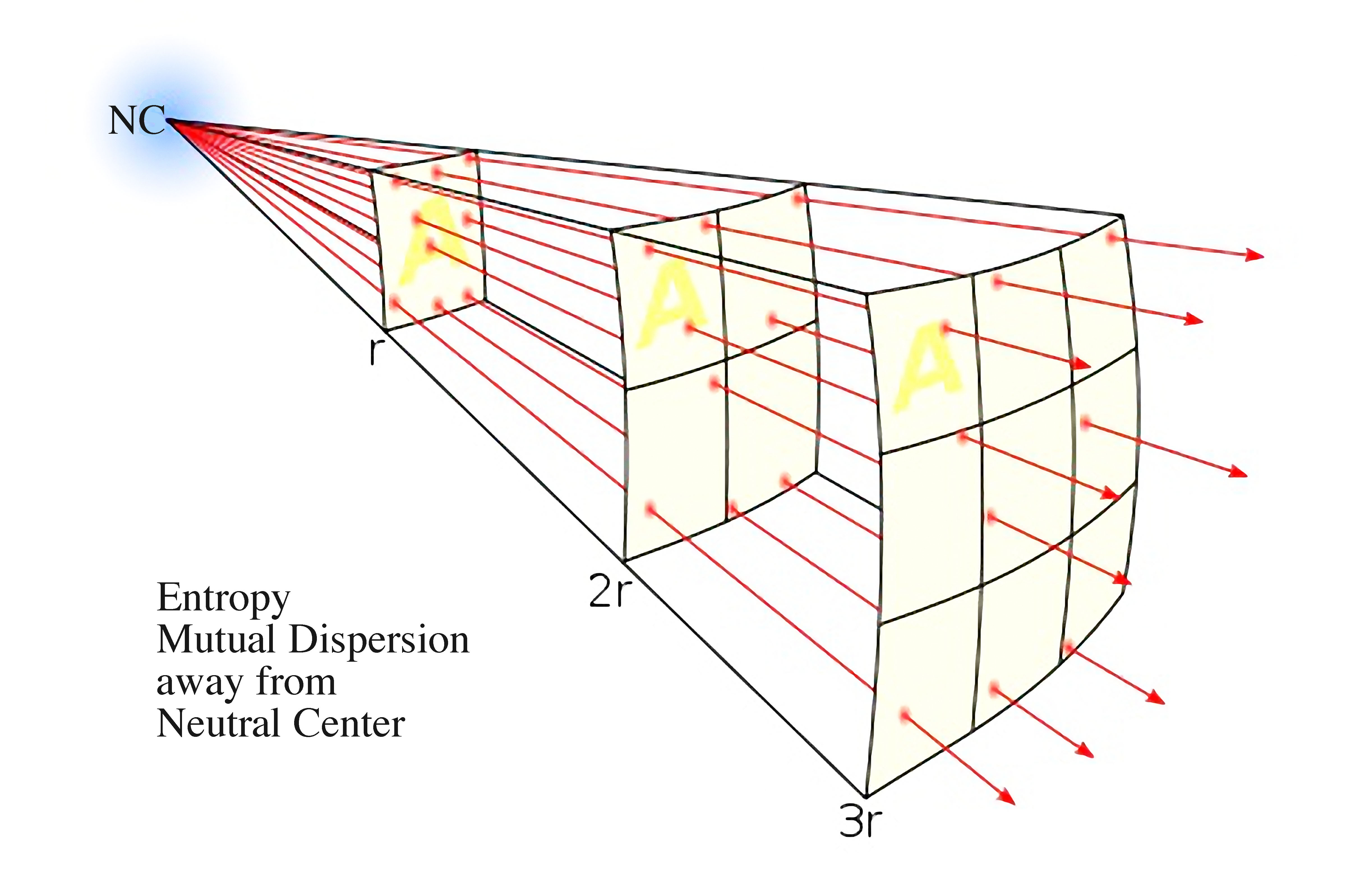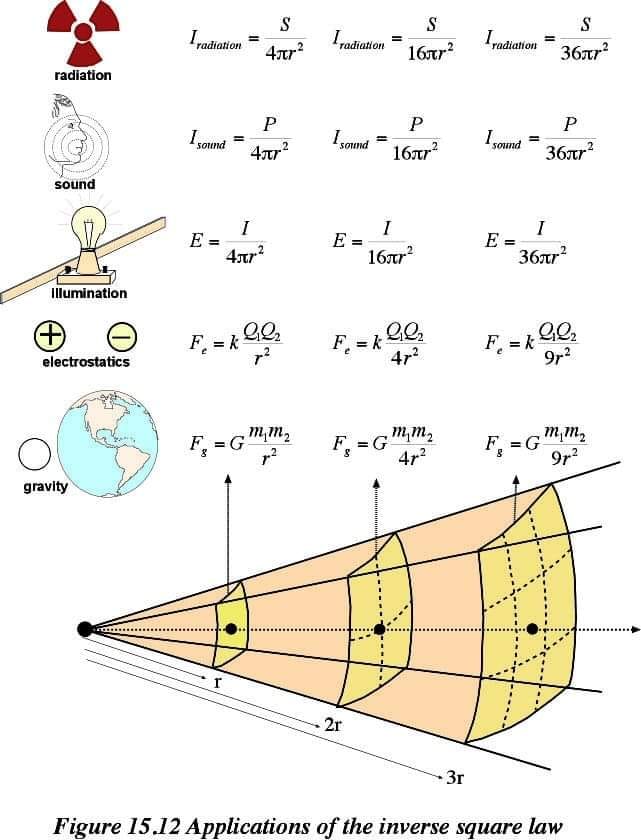Inverse Square Law: The inverse-square law, in physics, is any physical law stating that a specified physical quantity or intensity is inversely proportional to the square of the distance from the source of that physical quantity. The fundamental cause for this can be understood as geometric dilution corresponding to point-source radiation into three-dimensional space." Wikipedia, Inverse Square Law


Reciprocal of Square Law. See Syntropy
Russell
"The wave is created by dividing the four sexless rings of the inert gases into four pairs of oppositely sex-conditioned rings, and projecting them toward sex mates of adjoining wave-fields to find balance and unity in each other. God's concentrative thinking compresses these mate rings as they are projected. This is the generoactive (uphill flow of energy) principle which multiplies power and speed in the inverse ratio of the cube, as they are thus centripetally projected, until the red and blue
[p.120]
pair of cyclonic vortices, thus resulting, collide at wave amplitudes, midway between the two zero cathodes from which they were projected." [Atomic Suicide, page 119-120]
"We are thoughts of Mind being made in the image of our imaginings. The multiplicity of mathematics, as well as the density of concentrative thinking, are expressed, in infinite variety and complexity "out there" on the other ends of light rays, but they are zero at their Source within them." [Atomic Suicide, page 245]

See Also
Ellipse
exponentiation
Chart of Locked Potentials
Fibonacci
Fibonacci Relationships
Fibonacci Series
Locked Potentials and the Square Law
Part 12 - Russells Locked Potentials
Quantum Arithmetic Elements
Scale of Locked Potentials
Square Law
square of the reversed form of acceleration
3.04 - Power Accumulation via Fibonacci-like Patterns
12.04 - Locked Potentials and the Square Law
Inverse Square Law
Locked Potentials and the Square Law
root mean square
Square Law
square of the increase in velocity
square of the reversed form of acceleration
square of the rotational velocity
square of the velocity
square root
square
velocity
